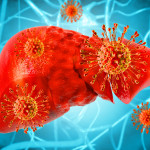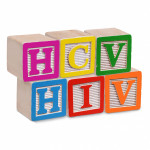 A Swiss study found that non-AIDS-related cancers have become the leading cause of death among people with HIV, in general, but that liver-related diseases far outweigh all other causes of death for people coinfected with both HIV and hepatitis C virus (HCV). Meanwhile, a second study suggests that antiretroviral (ARV) drugs are not contributing to deaths from any cause. These studies were presented Tuesday, March 1, at the 18th Conference on Retroviruses and Opportunistic Infections (CROI) in Boston.
A Swiss study found that non-AIDS-related cancers have become the leading cause of death among people with HIV, in general, but that liver-related diseases far outweigh all other causes of death for people coinfected with both HIV and hepatitis C virus (HCV). Meanwhile, a second study suggests that antiretroviral (ARV) drugs are not contributing to deaths from any cause. These studies were presented Tuesday, March 1, at the 18th Conference on Retroviruses and Opportunistic Infections (CROI) in Boston.
Though a somber subject, it is critically important to understand the primary causes of death in people with HIV and how those causes change over time. Understanding the causes of death can help scientists and policy makers decide how to prioritize research funding, and the knowledge adds weight to activists’ efforts to ensure that the concerns and needs of people with HIV are being taken into account in government and private industry.
Numerous studies have documented the plunge in deaths overall since the introduction of combination ARV therapy in the late 1990s, as well as deaths from AIDS-related conditions. Subsequently, more attention has been paid recently to other causes of death and to trying to understand the factors, including HIV, that contribute to those deaths.
To shed light on this topic, Rainer Weber, MD, from the University Hospital in Zurich, and his colleagues from the long-running Swiss HIV Cohort Study, analyzed data on deaths within the cohort between 2005 and 2009 and also compared them with deaths from earlier time periods.
Out of 9,053 cohort participants, 459 deaths occurred between 2005 and 2009. Seventy-six percent of the deaths occurred in men, and most people were between the ages of 42 and 56 when they died. Ninety-three percent of the people who died had been on ARVs at some point, 45 percent were coinfected with HIV and HCV, and 82 percent had a history of smoking tobacco. Autopsies were conducted in 19 percent of the deaths.
Whereas 80 percent of deaths before 1995 were from AIDS-related causes, this number dropped to 16 percent by the 2005 to 2009 time period. During this period, non-AIDS-related cancers took over as the leading cause of death, with nearly 20 percent dying from such cancers. Liver-related deaths, excluding liver cancer, had climbed to be the cause of 15 percent of all deaths. Drug and alcohol-related deaths, as well as suicides remained far higher than in the general population, and combined, they also accounted for 15 percent of all deaths.
One further conclusion of the study was that while people are living longer before dying, deaths are also occurring at higher CD4-cell levels, reflecting the trend that a growing proportion of deaths is from causes other than AIDS.
In a second study, also based in Europe, Justyna Kowalska, MD, from the Copenhagen HIV Program, and her colleagues analyzed trends in deaths in the EuroSIDA cohort study. Over the course of the study, researchers followed more than 15,000 HIV-positive people throughout Europe. Most were white men, and roughly 30 percent had received a previous AIDS diagnosis. Just under 70 percent had taken ARVs.
During the course of the study, 2,744 people in the cohort died. Of the deaths, just over half were non-AIDS-related, with non-AIDS-related infections, liver disease and non-AIDS cancers comprising 46 percent of all deaths.
Kowalska and her colleagues were keen to understand the impact of ARV use, given that some side effects—most notably unhealthy changes in cholesterol, triglycerides and body composition—are associated with an increased risk for a host of disorders.
They found, however, that ARV use did not contribute to the death rates from any causes of death in people who started treatment after 2002. In those who started before 2002, ARVs appeared to be particularly protective against non-AIDS-related causes of deaths in the first two years after a person began taking the medications. However, this effect diminished after the second year.
Advertisement
Advertisement
Advertisement





Comments
Comments